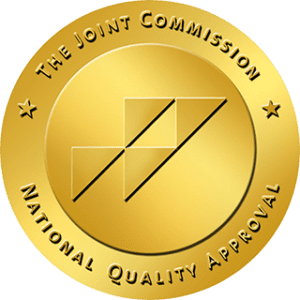Heroin use disorder is a progressive disease that develops over time, often beginning with casual experimentation and leading to physical and psychological dependence. While every individual’s experience with addiction is unique, the path to heroin dependence typically follows a series of stages, each marked by increasing tolerance, cravings, and loss of control. Understanding these stages can help you recognize the warning signs and seek early intervention.
Stage 1: Experimentation – The First Use
For many, heroin use begins out of curiosity, peer pressure, or as a way to escape emotional or physical pain. Some people are introduced to heroin after developing an opioid dependency from prescription painkillers, while others may try it recreationally, unaware of the dangers ahead.
People in this stage typically have little to no immediate withdrawal symptoms. They believe that they can “control” their use or stop at any time. The appeal to heroin is its euphoric “high” that is caused by a surge of dopamine in the brain. Occasional users typically snort or smoke heroin, though some may inject from the start.
While not everyone who experiments with heroin will develop an addiction, those who continue using or have a predisposition to substance use disorder are at high risk of moving into the next stage.
Stage 2: Regular Use – Increased Frequency
As heroin use continues, it often becomes more frequent and intentional rather than occasional. At this stage, individuals may begin seeking out the drug to enhance pleasurable experiences, cope with stress, or self-medicate for mental health issues like anxiety or depression.
In this stage, people are more inclined to use heroin in specific situations, such as after work, before bed, or when hanging out with friends. They begin to develop a pattern of use, though they still believe that they are in control. Mild withdrawal symptoms may appear between uses (e.g., mild cravings, irritability) and people may begin to neglect their responsibilities or hobbies in favor of using.
Many users rationalize their heroin use at this point, believing that as long as they maintain a functional life, their drug use isn’t a problem. However, regular heroin use rewires the brain’s reward system, setting the stage for dependence.
Stage 3: Risky Use – Losing Control
As heroin use increases in frequency and dosage, individuals begin to experience cravings and withdrawal symptoms when they don’t use. The psychological grip of the drug tightens, making it harder to resist.
Tolerance increases during this stage, meaning that the person requires larger doses to achieve the same “high.” They may use heroin alone, in secret, or at inappropriate times, such as at work or before a family event. Withdrawal symptoms are also common and include nausea, sweating, muscle aches, or agitation. People might also neglect personal hygiene, work, school, and relationships, as well as engage in risky behaviors like sharing needles.
This stage marks a dangerous turning point—users may still believe they have control, but in reality, heroin is beginning to dictate their daily decisions.

Stage 4: Dependence – The Body and Mind Rely on Heroin
At this stage, heroin use is no longer about pleasure—it’s about avoiding withdrawal. The brain has become physically dependent on the drug, and stopping suddenly can cause severe withdrawal symptoms that make quitting feel impossible.
People may use heroin multiple times a day just to feel “normal.” Severe withdrawal symptoms (e.g., vomiting, diarrhea, muscle spasms, intense cravings) are common, leading people to prioritize heroin over everything else. It’s also common for individuals to experience mental health issues such as anxiety, paranoia, or depression when they’re not using heroin.
Many individuals in this stage want to quit but feel trapped by the cycle of withdrawal and relapse. Some may begin injecting heroin instead of snorting or smoking it to achieve a more intense high, increasing the risk of overdose and infections.
Stage 5: Addiction – Full-Blown Heroin Use Disorder
At the addiction stage, heroin controls every aspect of life. The individual’s physical and psychological health is in decline, and they may engage in dangerous behaviors to support their habit, including criminal activity, manipulation, or self-isolation.
Heroin use disorder is a serious medical condition that makes it nearly impossible for a person to function without the drug. Overdose is a real possibility, often requiring medical intervention. Naloxone can reverse opioid overdoses if given at the right time. Other concerns that can happen in this stage include loss of relationships, feelings of hopelessness, and an increased risk of contracting diseases like HIV or hepatitis C.
By this point, quitting heroin without medical support can be life-threatening. The risk of fatal overdose is high due to increased tolerance and the presence of fentanyl-laced heroin in the drug supply.
Seeking Help: Breaking the Cycle of Heroin Addiction
The good news? Recovery from heroin use disorder is possible with the right support, treatment, and commitment. Here are some options:
Medically Supervised Detox
Detoxification helps individuals safely withdraw from heroin under medical supervision. It often involves medication-assisted treatment (MAT):
- Methadone: Reduces cravings and withdrawal symptoms.
- Buprenorphine (Suboxone): Blocks the effects of heroin while easing withdrawal.
- Naltrexone: Prevents heroin from producing a high if used again.
Inpatient or Outpatient Rehabilitation
Inpatient rehab provides 24/7 medical care and structured therapy. Outpatient programs offer flexibility for those who need treatment while continuing daily life. Options include partial hospitalization (6 hours a day), intensive outpatient (3 hours a day), and standard outpatient programs.
Behavioral Therapy and Counseling
While there are many types of therapy and counseling that work well for heroin use disorder, one of the best is cognitive behavioral therapy (CBT). This therapy helps individuals identify and change harmful thought patterns. Other effective therapies include group therapy, support groups (e.g., Narcotics Anonymous), and trauma therapy to address underlying mental health issues that may contribute to heroin use.
Harm Reduction Strategies
If quitting immediately isn’t possible, harm reduction services (needle exchange programs, supervised consumption sites, naloxone training) can help reduce risks while working toward recovery.
Heroin Use Disorder Treatment in Easton, PA
Heroin addiction doesn’t happen overnight—it progresses through distinct stages, making early intervention crucial. Recognizing the warning signs in yourself or a loved one can be the first step toward breaking the cycle and seeking help. While addiction may feel overwhelming, recovery is always possible with the right treatment, support, and determination.
If you or someone you know is struggling with heroin use, reach out to Recovery Cove for help today—your life is worth saving. You can speak with one of our compassionate team members at 484-549-COVE.




